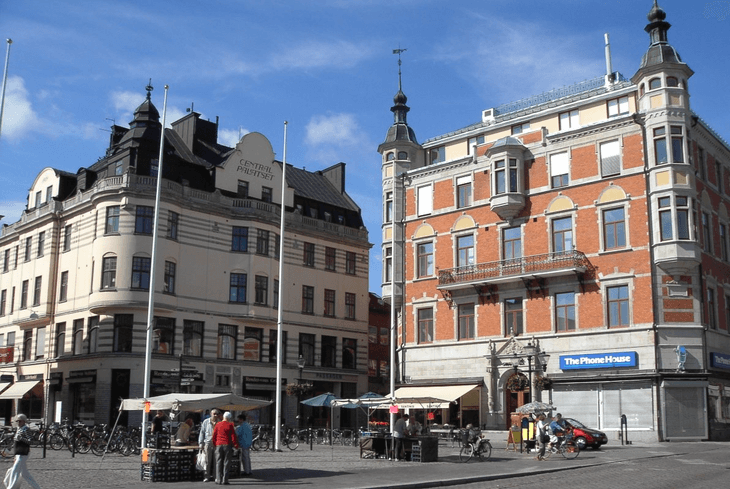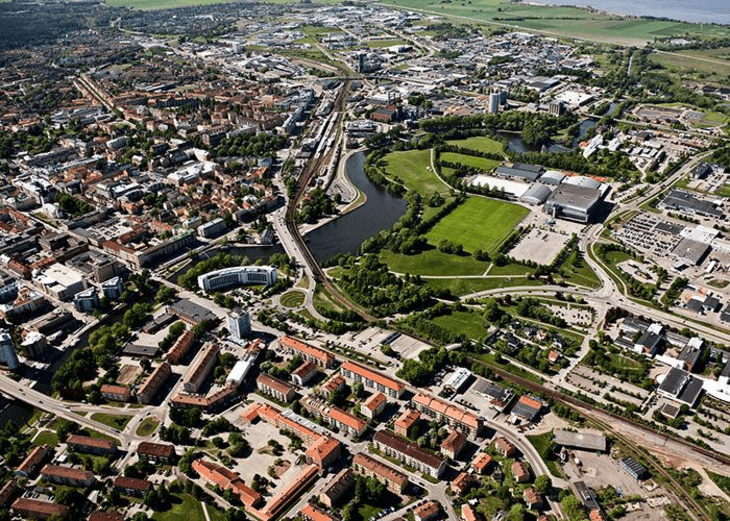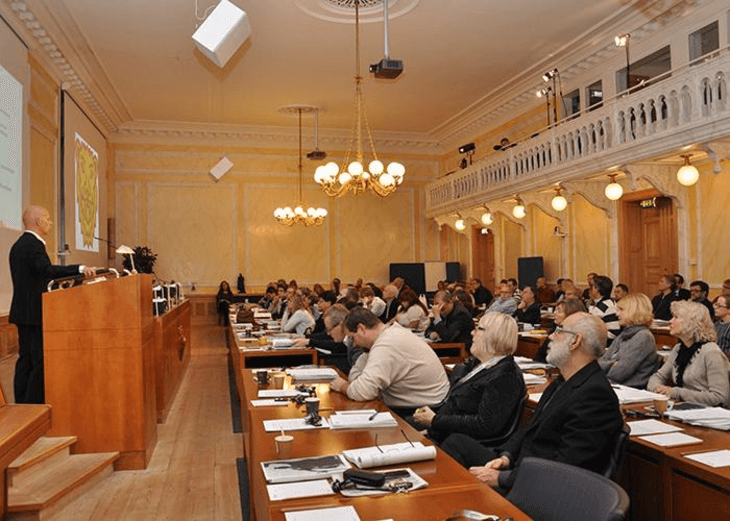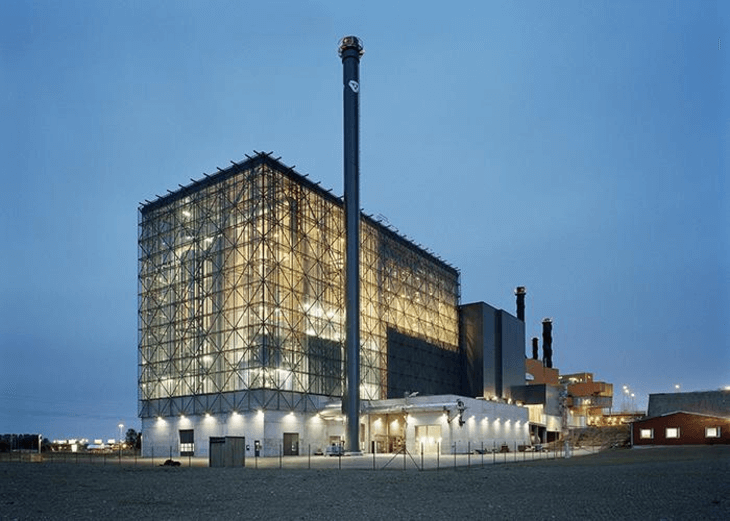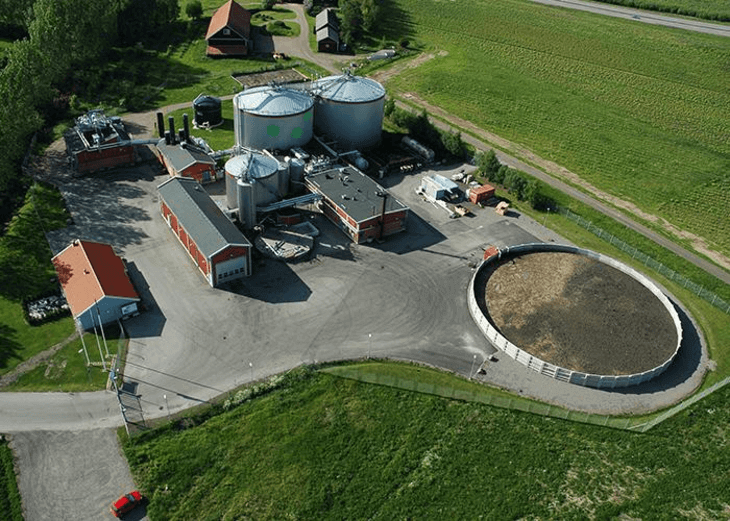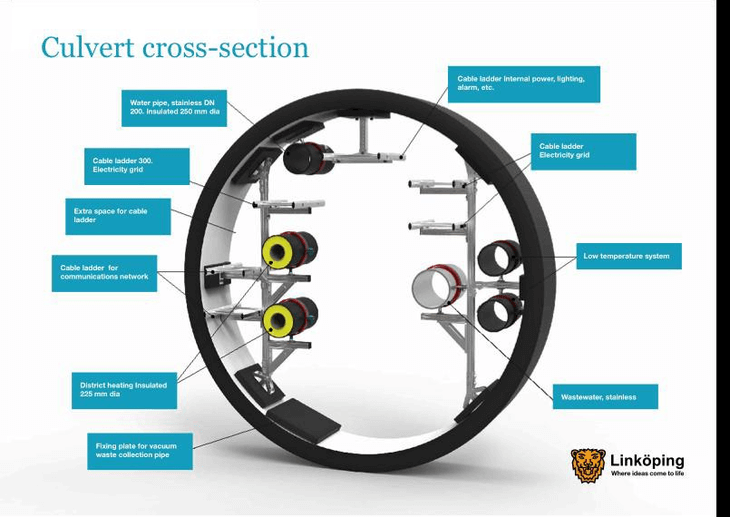In 2011 the Municipal Council adopted its long-term climate goal to make Linköping a carbon-neutral community by 2025.
Linköping has a bold goal: to become an absolutely carbon neutral city by 2025. The city council’s road to that goal was launched through broad-based collaboration and partnership with residents, employers, universities, other cities and national and international networks.
And the municipality has sought to lead by example: it uses renewable fuels (over half of its vehicles use biogas); it specifies climate criteria in its procurement processes; it regularly communicates climate and environmental issues to its employees and residents; and it works closely with Linköping University to develop methods and technologies to reduce CO2 emissions and establish a Biogas Research Centre. Two new combined heat and power plants have been built, with 95 percent of homes already connected. Buses are fueled by biogas produced from livestock manure and food waste.
Key to achieving the climate goal is the commitment and successful efforts of local government departments and companies, residents (at least 2,000 assisted in formulating the Agenda 21 plan) and the local business community. The results are already emerging: CO2 emissions are down by 25 percent since 1990, energy consumption in schools and hospitals have been reduced by 5 percent and are on a trend for further reductions.
Linköping Municipality has a long tradition of pro-active climate and environmental work. In 1993 a cross-party group was established to develop a local Agenda 21 plan, resulting in 1998 in the “Plan of Action for a Sustainable Linköping in the Long Term”. In 2011 the Municipal Council adopted its long-term climate goal to make Linköping a carbon-neutral community by 2025.
This goal is based upon the long-term climate and environmental strategy that has been an important part of the municipality’s political ambition since the 1970s. The Municipal Council has therefore adopted a range of programmes for environmental development:
- Long term strategic plan for sustainable Linköping
- General Plan for Physical Planning including Traffic Strategy
- Climate Strategy to Reduce Greenhouse Gas Emissions
- Nature Conservation Programme to Preserve and Promote Biodiversity
- Action Programme for Improved Air Quality with Special Focus on Particulates
- Waste Management Plan based on the EU’s “Waste Hierarchy”
In 1997, one of the world’s largest facilities for producing biogas for vehicle fuels opened in Linköping. Most of the gas – produced mainly from livestock manure, industrial food waste and slaughterhouse waste – fuels the city’s 70 public transport buses. Garbage trucks and approximately 1,000 other vehicles also run on the gas. Biogas, a renewable fuel, currently supplies 6% of Linköping’s vehicle fuel needs. The infrastructure is well developed with gas pipelines and five public gas filling stations. This large-scale investment has attracted two biogas companies active in the Swedish and international markets to Linköping, thus becoming a regional hub for the development of biogas.
The municipality of Linköping works in close cooperation with Linköping University to develop methods and technologies to reduce carbon dioxide emissions. The local and regional business communities are engaged in the research-based development of environmental technology. As a direct result of Linköping’s long-term commitment to biogas, Linköping University has established the Biogas Research Center, a national centre of academic excellence in biogas-related knowledge.
The most important source of Linköping’s energy supply are the two CHP ("Combined Cooling, Heat and Power") plants producing electricity and district heating in a highly efficient cogeneration process. 95% of homes are connected to the district-heating network, providing Linköping with one of the most efficient energy supply system in the world. The energy in household and commercial waste is recycled in the CHP plants and generates the majority of the heating and power produced there. In 2012 primary energy use in the district-heating system was 373 GWh compared with a figure of 1287 GWh for final energy consumption.
In 2012 the Municipal Council introduced sorting at source for domestic food waste. Placed in a special bag that is separated from other fractions by an optical sorting process, food waste is a substrate for biogas production and agricultural biofertiliser. Most households (80%) report that they sort food waste at source.
Moreover, people living and working in Linköping are given continuous information about:
- Free advice to householders and property owners about energy use
- Mobility management campaigns
- Energy mapping and energy advice for local business
- Energy and climate knowledge through competitions and campaigns for children and young people
In 2007 Linköping took the initiative to establish an Environmental Technology Centre, whose chief aim is to transform environmental challenges into business opportunities. The centre is tasked with supporting the environmental technology industry and raising its profile both nationally and internationally. Thanks to this initiative the Linköping region has attracted more national and international study visits in the environmental technology sector over the past years than anywhere else in Sweden apart from Stockholm.
Municipal property companies are making existing schools, homes, care homes, offices, sports and cultural facilities more energy efficient. Since 2009 energy consumption in municipal premises has fallen by 5%; by 2029 it will have fallen by 15%. New builds use approximately 25% less energy than national guidelines prescribe.
Linköping continuously monitors environmental, economic and social sustainability targets and conducts a detailed follow-up of 136 indicators every four years. Annual follow-ups monitor trends in CO2 emissions, energy production, energy use, and emissions of heavy metals, phosphorus and nitrogen into lakes and waterways. Air quality is monitored continuously.
Residents are informed of measured values and follow-ups via the municipality’s homepage.
The long-term climate and environmental initiatives have had many positive effects:
- Annual per capita waste has fallen from 305 to 208 kilos since 1992,
- Waste fractions sorted at source and collected from households as paper, plastic, metal, batteries, light bulbs and electronic equipment have increased,
- Nitrogen and phosphorus emissions from treated wastewater have decreased by 60% and 35% respectively since 2001,
- Nitrogen dioxide concentrations in urban environments have fallen from 29 to 8 μg/m3 air since the late 1980s,
- The number of kilometres driven per vehicle/year has decreased from 13,000 to 12,000 km over the past 10 years,
- 50% increase in new “green car” registrations,
- 56% of all the electricity used is produced locally from renewable sources and in a climate efficient way,
- 25% reduction in CO2 emissions between 1990 and 2010.
The most important factor behind the success of Linköping’s climate and environmental work is the combination of a long-term approach, a highly innovative driving force, broad-based collaboration and a political consensus. Collaboration and partnership – with residents, trade and industry, other municipalities, universities, authorities and national and international networks – has high priority in Linköping’s sustainability efforts.
Creating a carbon-neutral municipality is a never-ending process that combines development with business intelligence monitoring and the courage to test revolutionary new solutions. Linköping Municipality and its companies have a leading role in formulating policies, goals and guidelines and in setting a good example by using renewable fuels in vehicles, specifying energy and climate criteria when procuring goods and services, developing green IT solutions and communicating climate and environmental issues to employees. Most municipal companies are ISO 14001 certified. More than half of municipal vehicles use biogas; this – together with other renewable fuels, municipal water, sewerage and district heating/cooling systems, optic fibre networks and electricity production – creates optimum conditions for low climate impact.
To attain Linköping’s ambitious environmental and sustainability goals it is crucial to take an all-round approach wherever possible and to optimise and develop existing systems.
- Linköping, Sweden: Linköping Carbon Neutral 2025, Guangzhou Award for Urban Innovation, http://cms.guangzhouaward.org/template/view/id/2210/type/content/template_id/87.html (accessed 25th May 2016))
- Linköping Carbon Neutral 2025 – where ideas come to life, Urban innovation database, http://cms.guangzhouaward.org/template/view/id/2210/type/content/template_id/87.html (accessed 25th May 2016)
Want to know more about this project?
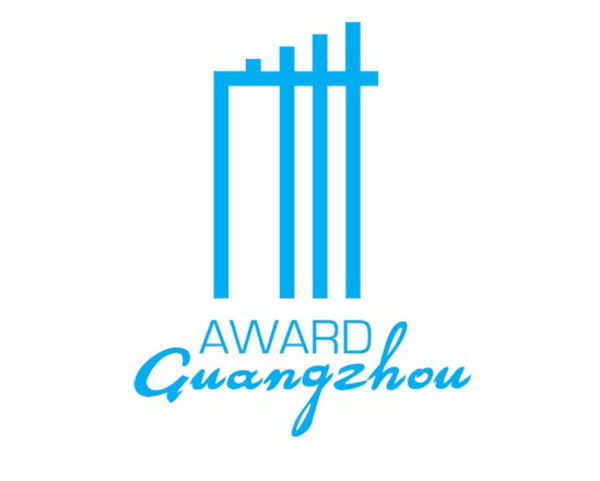
Related case studies
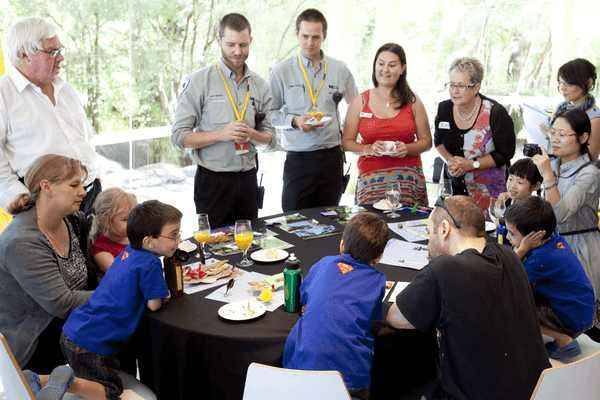
Melbourne , Australia
4°C Cooler – Using green infrastructure to buil...
In 2010 the city of Melbourne appointed a new Urban Landscape Team to produce a Green Infrastructure Program to cope with a difficult future climate and maintain its economic prosperity and liveability.
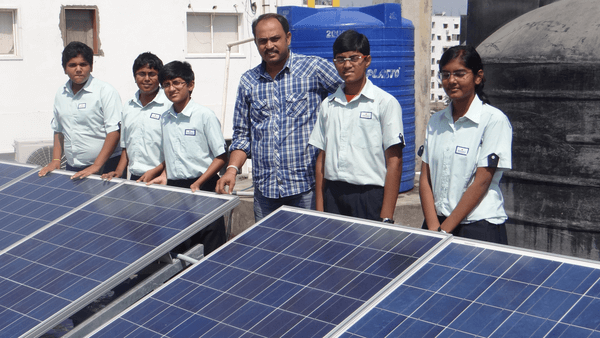
Hyderabad, India
Solar powered schools
The project aims to provide low-carbon power supply for public buildings and their neighbourhoods.
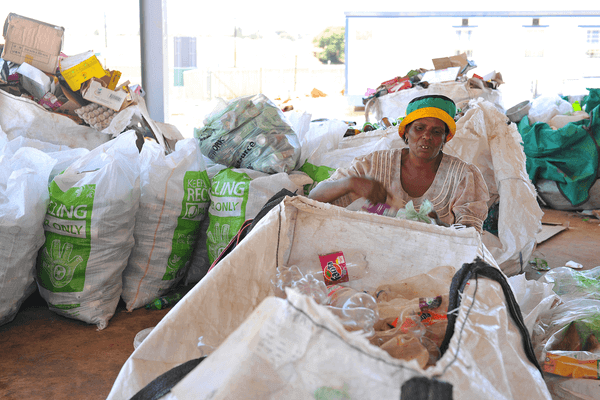
Johannesburg, South Africa
Separation at Source Programme (S@S) in the Cit...
The S@S programme aims to reduce waste to landfills, establish a recycling economy with citizen support and participation.
